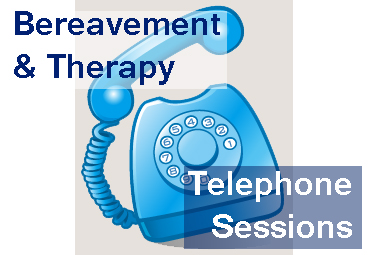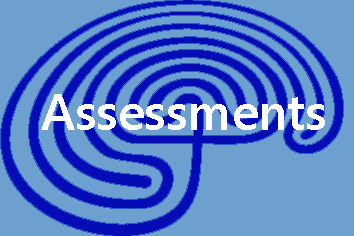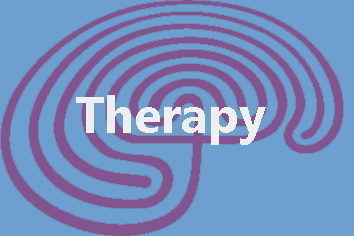What is Dyslexia
By Dr Addy Hackett
March 2012
Dyslexia has been studied for over a hundred years, however, no universally accepted definition has been formulated so far (Mather & Wendling, 2012, p10). Although no global consensus has been found, many definitions contain similar components and describe dyslexia as a learning disability or neurological disorder which includes poor reading and spelling ability and lack of ease with reading and spelling. The British Dyslexia Association (cited in: Mather & Wendling, 2012, p12) defines dyslexia as a specific learning difficulty that mainly affects the development of literacy and language related skills. They state that it is likely to be present at birth and to be a lifelong condition, and is characterised by difficulties with phonological processing, rapid naming, working memory, processing speed, and the automatic development of skills that may not match up to an individual’s other cognitive abilities. Although dyslexia is legally recognised as a ‘disability’, it is not a ‘disease’ nor can it be ‘cured’. Indeed, the neurological differences found in dyslexia may confer advantages for some individuals (e.g. in visual or perceptual skills), which may to some extent explain the apparent paradox that some individuals who have problems with elementary skills such as reading and writing can nevertheless be highly gifted in other areas (Lucid-research.com).
The above shows that dyslexia is often defined using a deficit model. However, it appears that the deficit model of dyslexia is now steadily being replaced by a model that recognises dyslexia as a difference in cognition and learning (Lucid-research.com). The original view of dyslexia was based on a categorical diagnostic system, however, more recent data from the Connecticut Longitudinal Study suggests that reading difficulties, including dyslexia, occur as part of a continuum that includes non-impaired as well as disabled readers (Shaywitz, Bennett & Shaywitz, 2008).
Moody (2006, p11) states that difficulties arising from being dyslectic can be grouped into three main categories: auditory dyslexia, visual dyslexia and processing speed dyslexia. She explains (p12) that auditory dyslexia denotes a weakness in auditory memory, visual dyslexia refers to problems with visual perception and visual memory, and processing speed dyslexia is associated with slowness in processing information. Processing speed dyslexia is usually found in combination with one or both of the other two types of dyslexia, however it also has been identified without obvious visual and auditory problems which can make it more difficult to spot (Moody, 2006, p21).
Children with dyslexia often will show two obvious difficulties when asked to read text at their grade level (Hudson, High, and Al Otaiba, (2007). The first difficulty has to do with the “fluent word recognition”, which means that the child is not able to read as many of the words in a text by sight as average readers, will stumble on many words, guess words, or attempt to "sound out" words. The second difficulty relates to phonological processing and often shows up as decoding difficulties. Due to an underlying deficit in the sound component of language, dyslexic readers struggle to connect letters and sounds which causes difficulties with identifying unknown words. There is a growing consensus in support of the phonological theory. The theory recognizes that in order to read, a child must acquire the insight that spoken words can be pulled apart into the elemental particles of speech and that the letters in a written word represent these sounds (Shaywitz & Shaywitz, 2007). This phenomenon is also referred to as phonological awareness. Phonological awareness refers to the ability to perceive and manipulate the sounds that make up the words in a person’s language (Mather & Wendling, 2012, p78). Research suggests that impaired phonological awareness may be the key deficit and early marker of dyslexia (Catts & Kamhi, 2005; Gillon, 2004).
Literature reports that dyslexia has a high co-morbidity with other complex disorders (Pennington & Olson, 2007: cited in Mather & Wendling, 2012). The most common co-morbid disorders are attention deficit hyperactivity disorder (ADHD), speech sound disorder (SSD), and specific language impairment (SLI) (Mather & Wendling, 2012, p69). These disorders have some overlap with Dyslexia but do have distinctive characteristics that separates them from each other (Catts, Adolf, Hogan, & Weismer, 2005; Pennington, Grossier & Welsh, 1993.). The exploration of these differences and similarities as well as the use of certain labels and categorizations is a topic of much debate in current literature, but falls outside the scope if this essay.
Dyslexia is a neurobiological disorder (Hudson, High & Al Otaiba, 2007). The development of functional brain imaging (fMRI) over recent years has provided consistent and replicable data on the location of the neural systems for reading and how they differ in readers with dyslexia (Mather & Wendling, 2012, p47). Structural analyses of the brain have found that people with dyslexia may have less gray matter than non-dyslexics (Booth et al, 2001), may have less white matter in certain brain areas (Deutch, et al, 2005), and/or have differences in hemispherical asymmetry (Heim & Keil, 2004). There is much research evidence to support that dyslexia is inherited and not acquired (Olson, 2006; Oliver & Plomin, 2007), unless specific brain damage occurs in which case the disorder is referred to as alexia (Mather & Wendling 2012). Dyslexia does reportedly (Hawke, Olson, Willcutt, Wadsworth & DeFries, 2009) occur slightly more often amongst males than females. The genetic and neurobiological basis of dyslexia indicates that dyslexia is not caused by socio-economic circumstances like low-income, developmental delay, speech or hearing impairments, or learning a second language. However, environmental factors can affect reading ability, particularly early reading development (Mather & Wendling, 2012, p75). There is still much to learn about the neurobiology of dyslexia but Katzir & Pare-Blagoev (2006) argue that the increasing knowledge will ultimately inform more tailored interventions for children with dyslexia. Furthermore, studies that demonstrate the effects of a reading intervention on neural systems have important implications for public policy making and the development of evidence-based reading intervention at an early age (Shaywitz, Bennett & Shaywitz, 2008).
References
Booth, J. R., Burman, D. D., Van Santen, F. W., Harasaki, Y., Gitelman, D. R., Parrish, T. R., & Mesulam, M. M. (2001). The development of specialized brain systems in reading and oral-language. Child Neuropsychology, 7, 119-141.
Catts, H., Adolf, S., Hogan, T., & Weismer, S. (2005). Are specific language impairments and dyslexia distinct disorders? Journal of Speech, Language, and Hearing Research, 48, 1378-1396.
Catts, H., & Kamhi, A. (2005). Language and reading disabilities. Boston: Allyn & Bacon.
Deutsch, G. K., Dougherty, R. F., Bammer, R., Siok, W. T., Gabrieli, J. D. E., & Wandell, B. (2005). Children’s reading performance is correlated with white matter structure measured by diffusion tensor imaging. Cortex, 41, 354–363
Gillon, G. (2004). Phonological awareness: from research to practice. New York: Guilford Press.
Hawke, J.L., Olson, R.K., Willcutt, E.G., Wadsworth, S.J., & DeFries, J.C. (2009). Gender ratios for reading difficulties. Dyslexia, 15, 239-242.
Heim S, Keil A (2004). Large-scale neural correlates of developmental dyslexia. European Child & Adolescence Psychiatry, 13,125–140.
Hornsby, B. (1997). Overcoming Dyslexia; A straight-forward guide for
families and teachers (3rd ed). London: Vermilion.
Hudson, R.F., High, L. Al Otaiba, S. (2007) Dyslexia and the brain: What does current research tell us? The Reading Teacher, 60(6), 506-515.
Katzir, T., & Pare-Blagoev, J. (2006). Applying cognitive neuroscience research to education: the case of literacy. Educational Psychologist, 41, 53-74.
Lucid-research.com. Fact Sheet 19: Understanding Dyslexia. http://www.lucid- research.com/documents/factsheets/FS19_Understandingdyslexia.pdf. [Retrieved on 10/03/2012].
Mather, N. & Wendling, B.J. (2012). Essentials of Dyslexia Assessment and Intervention. New Jersey: John Wiley & Sons.
Moody, S. (2006). Dyslexia; How to survive and succeed at work. London: Vermilion.
Oliver, B.R. & Plomin, R. (2007). Twins’ Early Development Study (TEDS): A multivariate, longitudinal genetic investigation of language, cognition and behaviour problems from childhood through adolescence. Twin Reseach and Human Genetics, 10, 96-105.
Olson, R.K. (2006). Genetic and environmental influences on the development of reading and related cognitive skills. In R.M. Joshi & P.G. Aaron (Eds.), Handbook of orthography and literacy. Mahwah, NJ: Erlbaum, pp 679-707.
Pennington B, Grossier D,Welsh M. 1993. Contrasting cognitive deficits in attention deficit hyperactivity disorder vs. reading disability. Dev. Psychol, 29, 511–23.
Pennington, B.F. & Olson, R.K. (2007). Genetics of dyslexia. In: M.J. Snowling & C. Hulme (Eds), The science of reading: A handbook (pp.453-472). Malden, MA: Blackwell.
Shaywitz, S.E., Morris, R., & Shaywit, B.A. (2008). The Education of Dyslexic Children from Childhood to Young Adulthood. Annual Review of Psycholology, 59, 451–75.
Shaywitz, S.E. & Shaywitz, B.A. (2007). Management of dyslexia, its rationale and underlying neurobiology. Pediatric Clinics of North America,54(3),609-23.
By Dr Addy Hackett
March 2012
Dyslexia has been studied for over a hundred years, however, no universally accepted definition has been formulated so far (Mather & Wendling, 2012, p10). Although no global consensus has been found, many definitions contain similar components and describe dyslexia as a learning disability or neurological disorder which includes poor reading and spelling ability and lack of ease with reading and spelling. The British Dyslexia Association (cited in: Mather & Wendling, 2012, p12) defines dyslexia as a specific learning difficulty that mainly affects the development of literacy and language related skills. They state that it is likely to be present at birth and to be a lifelong condition, and is characterised by difficulties with phonological processing, rapid naming, working memory, processing speed, and the automatic development of skills that may not match up to an individual’s other cognitive abilities. Although dyslexia is legally recognised as a ‘disability’, it is not a ‘disease’ nor can it be ‘cured’. Indeed, the neurological differences found in dyslexia may confer advantages for some individuals (e.g. in visual or perceptual skills), which may to some extent explain the apparent paradox that some individuals who have problems with elementary skills such as reading and writing can nevertheless be highly gifted in other areas (Lucid-research.com).
The above shows that dyslexia is often defined using a deficit model. However, it appears that the deficit model of dyslexia is now steadily being replaced by a model that recognises dyslexia as a difference in cognition and learning (Lucid-research.com). The original view of dyslexia was based on a categorical diagnostic system, however, more recent data from the Connecticut Longitudinal Study suggests that reading difficulties, including dyslexia, occur as part of a continuum that includes non-impaired as well as disabled readers (Shaywitz, Bennett & Shaywitz, 2008).
Moody (2006, p11) states that difficulties arising from being dyslectic can be grouped into three main categories: auditory dyslexia, visual dyslexia and processing speed dyslexia. She explains (p12) that auditory dyslexia denotes a weakness in auditory memory, visual dyslexia refers to problems with visual perception and visual memory, and processing speed dyslexia is associated with slowness in processing information. Processing speed dyslexia is usually found in combination with one or both of the other two types of dyslexia, however it also has been identified without obvious visual and auditory problems which can make it more difficult to spot (Moody, 2006, p21).
Children with dyslexia often will show two obvious difficulties when asked to read text at their grade level (Hudson, High, and Al Otaiba, (2007). The first difficulty has to do with the “fluent word recognition”, which means that the child is not able to read as many of the words in a text by sight as average readers, will stumble on many words, guess words, or attempt to "sound out" words. The second difficulty relates to phonological processing and often shows up as decoding difficulties. Due to an underlying deficit in the sound component of language, dyslexic readers struggle to connect letters and sounds which causes difficulties with identifying unknown words. There is a growing consensus in support of the phonological theory. The theory recognizes that in order to read, a child must acquire the insight that spoken words can be pulled apart into the elemental particles of speech and that the letters in a written word represent these sounds (Shaywitz & Shaywitz, 2007). This phenomenon is also referred to as phonological awareness. Phonological awareness refers to the ability to perceive and manipulate the sounds that make up the words in a person’s language (Mather & Wendling, 2012, p78). Research suggests that impaired phonological awareness may be the key deficit and early marker of dyslexia (Catts & Kamhi, 2005; Gillon, 2004).
Literature reports that dyslexia has a high co-morbidity with other complex disorders (Pennington & Olson, 2007: cited in Mather & Wendling, 2012). The most common co-morbid disorders are attention deficit hyperactivity disorder (ADHD), speech sound disorder (SSD), and specific language impairment (SLI) (Mather & Wendling, 2012, p69). These disorders have some overlap with Dyslexia but do have distinctive characteristics that separates them from each other (Catts, Adolf, Hogan, & Weismer, 2005; Pennington, Grossier & Welsh, 1993.). The exploration of these differences and similarities as well as the use of certain labels and categorizations is a topic of much debate in current literature, but falls outside the scope if this essay.
Dyslexia is a neurobiological disorder (Hudson, High & Al Otaiba, 2007). The development of functional brain imaging (fMRI) over recent years has provided consistent and replicable data on the location of the neural systems for reading and how they differ in readers with dyslexia (Mather & Wendling, 2012, p47). Structural analyses of the brain have found that people with dyslexia may have less gray matter than non-dyslexics (Booth et al, 2001), may have less white matter in certain brain areas (Deutch, et al, 2005), and/or have differences in hemispherical asymmetry (Heim & Keil, 2004). There is much research evidence to support that dyslexia is inherited and not acquired (Olson, 2006; Oliver & Plomin, 2007), unless specific brain damage occurs in which case the disorder is referred to as alexia (Mather & Wendling 2012). Dyslexia does reportedly (Hawke, Olson, Willcutt, Wadsworth & DeFries, 2009) occur slightly more often amongst males than females. The genetic and neurobiological basis of dyslexia indicates that dyslexia is not caused by socio-economic circumstances like low-income, developmental delay, speech or hearing impairments, or learning a second language. However, environmental factors can affect reading ability, particularly early reading development (Mather & Wendling, 2012, p75). There is still much to learn about the neurobiology of dyslexia but Katzir & Pare-Blagoev (2006) argue that the increasing knowledge will ultimately inform more tailored interventions for children with dyslexia. Furthermore, studies that demonstrate the effects of a reading intervention on neural systems have important implications for public policy making and the development of evidence-based reading intervention at an early age (Shaywitz, Bennett & Shaywitz, 2008).
References
Booth, J. R., Burman, D. D., Van Santen, F. W., Harasaki, Y., Gitelman, D. R., Parrish, T. R., & Mesulam, M. M. (2001). The development of specialized brain systems in reading and oral-language. Child Neuropsychology, 7, 119-141.
Catts, H., Adolf, S., Hogan, T., & Weismer, S. (2005). Are specific language impairments and dyslexia distinct disorders? Journal of Speech, Language, and Hearing Research, 48, 1378-1396.
Catts, H., & Kamhi, A. (2005). Language and reading disabilities. Boston: Allyn & Bacon.
Deutsch, G. K., Dougherty, R. F., Bammer, R., Siok, W. T., Gabrieli, J. D. E., & Wandell, B. (2005). Children’s reading performance is correlated with white matter structure measured by diffusion tensor imaging. Cortex, 41, 354–363
Gillon, G. (2004). Phonological awareness: from research to practice. New York: Guilford Press.
Hawke, J.L., Olson, R.K., Willcutt, E.G., Wadsworth, S.J., & DeFries, J.C. (2009). Gender ratios for reading difficulties. Dyslexia, 15, 239-242.
Heim S, Keil A (2004). Large-scale neural correlates of developmental dyslexia. European Child & Adolescence Psychiatry, 13,125–140.
Hornsby, B. (1997). Overcoming Dyslexia; A straight-forward guide for
families and teachers (3rd ed). London: Vermilion.
Hudson, R.F., High, L. Al Otaiba, S. (2007) Dyslexia and the brain: What does current research tell us? The Reading Teacher, 60(6), 506-515.
Katzir, T., & Pare-Blagoev, J. (2006). Applying cognitive neuroscience research to education: the case of literacy. Educational Psychologist, 41, 53-74.
Lucid-research.com. Fact Sheet 19: Understanding Dyslexia. http://www.lucid- research.com/documents/factsheets/FS19_Understandingdyslexia.pdf. [Retrieved on 10/03/2012].
Mather, N. & Wendling, B.J. (2012). Essentials of Dyslexia Assessment and Intervention. New Jersey: John Wiley & Sons.
Moody, S. (2006). Dyslexia; How to survive and succeed at work. London: Vermilion.
Oliver, B.R. & Plomin, R. (2007). Twins’ Early Development Study (TEDS): A multivariate, longitudinal genetic investigation of language, cognition and behaviour problems from childhood through adolescence. Twin Reseach and Human Genetics, 10, 96-105.
Olson, R.K. (2006). Genetic and environmental influences on the development of reading and related cognitive skills. In R.M. Joshi & P.G. Aaron (Eds.), Handbook of orthography and literacy. Mahwah, NJ: Erlbaum, pp 679-707.
Pennington B, Grossier D,Welsh M. 1993. Contrasting cognitive deficits in attention deficit hyperactivity disorder vs. reading disability. Dev. Psychol, 29, 511–23.
Pennington, B.F. & Olson, R.K. (2007). Genetics of dyslexia. In: M.J. Snowling & C. Hulme (Eds), The science of reading: A handbook (pp.453-472). Malden, MA: Blackwell.
Shaywitz, S.E., Morris, R., & Shaywit, B.A. (2008). The Education of Dyslexic Children from Childhood to Young Adulthood. Annual Review of Psycholology, 59, 451–75.
Shaywitz, S.E. & Shaywitz, B.A. (2007). Management of dyslexia, its rationale and underlying neurobiology. Pediatric Clinics of North America,54(3),609-23.





